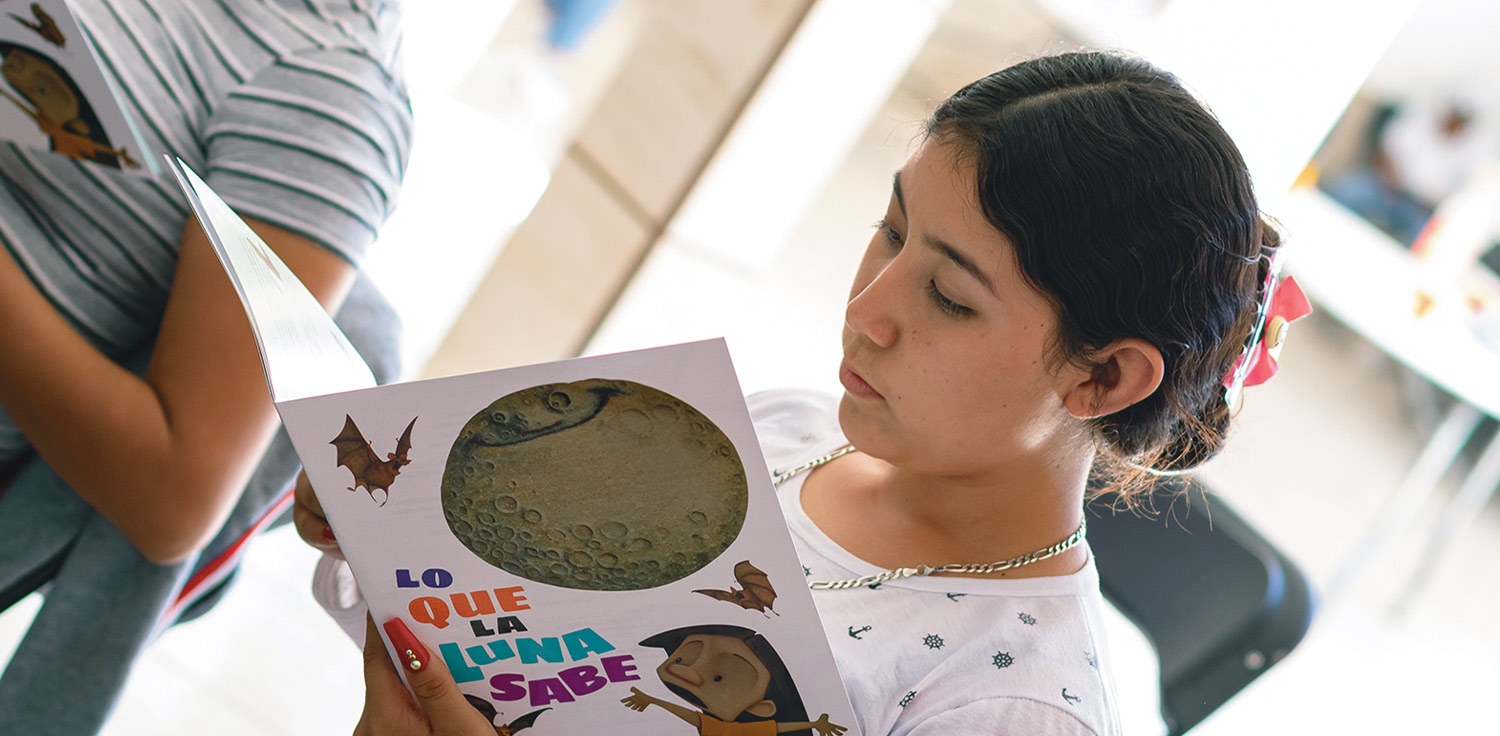Interconnection in Sierra La Mojonera

Community involvement is key to Sierra La Mojonera bat conservation
ndangered Mexican long-nosed bats (Leptonycteris nivalis) and agave plants enjoy a beautiful, mutually beneficial relationship that has evolved over thousands of years. As mutualists, the bats pollinate the agave, and the agave sustains the bats. Agaves aren’t just essential to bats. They provide shelter and are a food source for other animals and are important to the economic success of people.
Working with members of ejidos (a form of communal land ownership), Dr. Ibarra aims to increase the number of agave plants that populations of the Endangered Mexican long-nosed bat feed upon in Sierra La Mojonera, Mexico, a protected area managed by the National Commission of Protected Areas (CONANP). The growth of these plants depends on factors like soil quality, rainfall, climate, and various other growing conditions, and they can take five to 20 years to bloom. Dr. Ibarra says researchers use models to predict 30 to 50 years ahead to see where future agave populations will thrive.
The team has a goal to plant 200,000 agaves in northeast Mexico alone.
Land conversion, livestock overgrazing, wildfires, and climate change have significantly changed agave plants’ seasonality, and droughts have impacted the usually hardy plant. “We tend to think that agaves are desert plants and therefore resistant to drought,” Dr. Ibarra says. “But when you have three to four years of extreme drought, you see the mortality of plants and delayed or advanced flowering.” In addition, extreme droughts have killed off the grass and other native plants usually eaten by cattle, which leads farmers to feed them flowering agave stalks or leaves, further decimating agave populations.
“Our main mission is the bats, and we are building networks and partnerships with experts that can support all these other aspects of conservation.”
—Dr. Ana Ibarra
When plant flowering is delayed or advanced, it directly impacts the survival of already Endangered nectar-eating bats. “A lot of migratory bats sync migration and availability of resources with reproduction,” Dr. Ibarra says. “So, for example, in one year, we saw with one of these migratory bats that their maternity colonies arrived where no food was available yet. They cannot delay reproduction, so they had their babies, but they could not support them.”


Putting plans into action
To counter these problems, the team aims to plant 200,000 agaves along bat migratory routes in northeast Mexico alone. Restoring agave populations in these migratory corridors includes planting where researchers know agaves grow and migration happens. But they also predict future agave distributions and flower timing in other areas.
This is a long-term project with objectives over 15 to 20 years, and local engagement and capacity building is paramount to its success. The strategy includes intensive restoration of priority areas, planting agave, restoring the soil, and promoting ecological agricultural methods. That includes regenerative and sustainable cattle ranching and pasture management practices.
As a national strategy, the project also includes short-term goals of one, three, and five-year terms, which differ at various sites across the country. Broadly, the goals include the development of eco-conscious initiatives such as new local, community-based green businesses to foster community involvement and engagement in conservation. The last stage would be for BCI to “remain as an advisor, collaborator, and facilitator, and hopefully, this partnership lasts forever,” Dr. Ibarra says.
Part of the community involvement centers on local youth. Laura Navarro Noriega is an art and environmental education expert and the Advisor for the Program for Conservation of Mexican Bats and for RELCOM (Latin American Network for the Conservation of Bats). She has designed various educational strategies to promote bat conservation, including educational and communication programs in rural communities, and she has produced teaching materials, manuals, games, and toys. Since 2016, she has been strengthening the Strategy of Environmental Education of the Sierra La Mojonera Flora and Fauna Protection Area. She describes this project’s objectives as creating a conservation culture among future environmental guardians. The project has been popular and widely embraced, with almost 70% of the schools in the area taking part.
“Bats arouse a lot of curiosity and interest in children, and also in adults.” —Laura Navarro Noriega
“What Luna Knows” is a children’s book and accompanying play that teaches students about bat conservation and helps kids confront their feelings. The organizers found that children sometimes fear bats, especially when their knowledge about the animals is limited. The programming teaches children about the important job different species of bats perform by keeping insect populations under control and pollinating plants. Educators also discuss how to avoid disturbing them with noise and light pollution.


Mexican long-nosed bat
Photo: J. Scott Altenbach
The Agave Restoration Initiative
Recharging nectar corridors with agaves
The Agave Restoration Initiative involves many strategies to support and safeguard the food source for Endangered Mexican long-nosed bats (Leptonycteris nivalis) and other nectar-feeding bats. Such strategies include community-based conservation and restoration to plant agaves and showcase how versatile and important this plant is to bats and local people. BCI and partners have planted over 80,000 agaves connecting critical “nectar corridors” in seven U.S. and Mexican states.
Agave plants can be fermented and distilled to make spirits like mezcal and tequila. Other traditional uses include using the fibers for various textile products such as rope, fabric, and paper, as well as for medicinal purposes, soil erosion control, and livestock fodder.
Work to restore agave plants benefits bat populations and supports other conservation efforts. Dr. Ibarra explains, “Our mission started with the bats, but as you dig into the complexity of conservation, we started branching out. Our main mission is the bats, and we are building networks and partnerships with experts to support all these other aspects of conservation.”